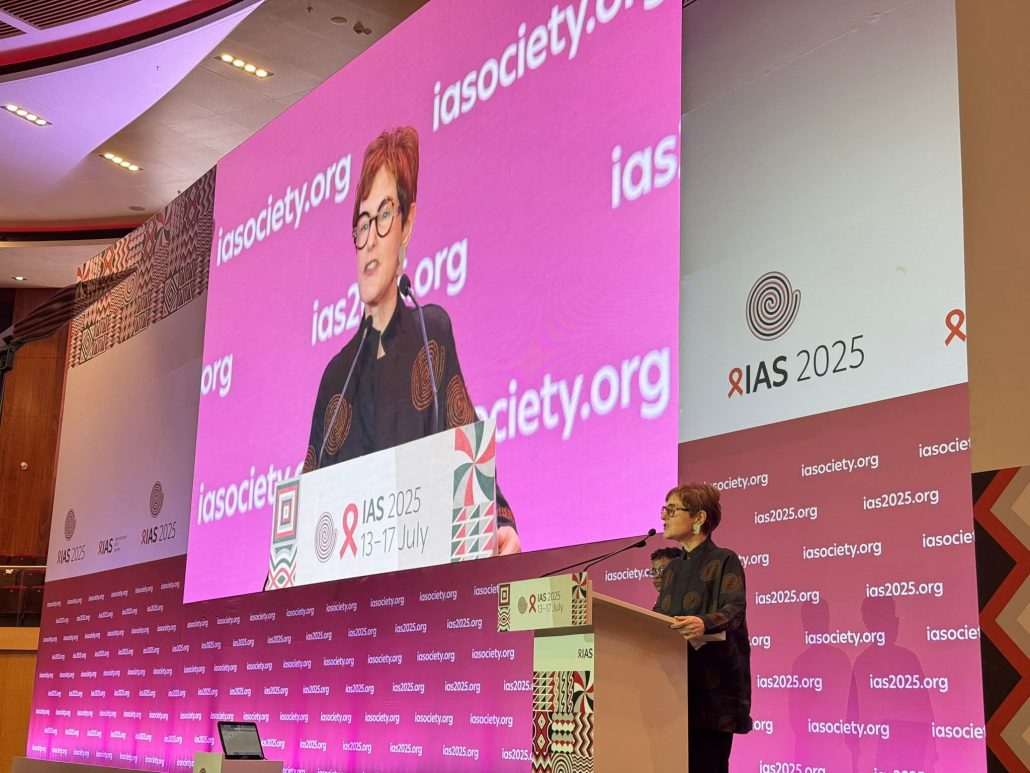
The 13th International AIDS Society Conference on HIV Science (IAS 2025), held Kigali, Rwanda, closed with a strong call for sustained global solidarity, local innovation, and urgent policy shifts to safeguard hard-won gains in the global HIV response.
Amid unprecedented scientific progress, the conference was also underscored by a deepening funding crisis threatening to reverse decades of advancements.
Here are the major takeaways from the pivotal conference:
1. Funding Cuts Threaten HIV Progress
A sharp undercurrent throughout IAS 2025 was the devastating impact of recent funding withdrawals. The abrupt pullback of US funding earlier this year was described as “seismic,” with immediate repercussions in several regions.
In Mozambique, new antiretroviral therapy (ART) initiations dropped by 25% within a single month. Johannesburg saw testing, diagnoses and ART initiation plummet by as much as 30% over the past year. The situation was equally dire across Latin America and the Caribbean, where 87 percent of 40 HIV organizations reported suspended funding.
While delegates welcomed the US Senate’s bipartisan move to safeguard the President’s Emergency Plan for AIDS Relief (PEPFAR), UNAIDS officials stressed the urgency of shifting toward domestic funding and long-term sustainability — without losing sight of global responsibility.
2. Africa Moves from Recipient to Global Driver
With the continent as host and focus, IAS 2025 offered a powerful narrative shift , Africa as a scientific powerhouse in the global HIV response.
The conference spotlighted African-led vaccine research and introduced the Africa Cure Consortium, a bold initiative steering homegrown cure strategies. Delegates also hailed Rwanda’s effective response to the Marburg virus outbreak as a case study in swift, science-based public health action.
3. Lenacapavir Is The Breakthrough
One of the most discussed breakthroughs was Lenacapavir (LEN), a long-acting, twice-yearly injectable pre-exposure prophylaxis (PrEP) option. Following its FDA approval, a landmark access deal was struck between Gilead and the Global Fund to deliver LEN at no profit to up to two million individuals.
The World Health Organization (WHO) has now endorsed LEN in its new HIV prevention guidelines. Trial results revealed high effectiveness and a strong preference among varied groups, notably adolescents and pregnant women.
4. A Growing Arsenal of Long-Acting Options
In what many called a game-changing evolution, IAS 2025 showcased an expanding toolbox of long-acting HIV prevention methods.
The oral once-monthly PrEP pill MK-8527 is set to begin Phase 3 trials across Africa. Real-world data from Zambia revealed high adherence to injectable cabotegravir (CAB-LA) among adolescent girls and young women. Meanwhile, a new licensing deal between the Medicines Patent Pool and ViiV Healthcare will allow generic versions of CAB-LA to be used for HIV treatment, in combination with rilpivirine, across 133 countries.
5. Gains and Gaps in Paediatric and Adolescent Care
Paediatric and adolescent HIV care drew critical attention. Progress included improved formulations, simplified dosing, and early research into using broadly neutralizing antibodies (bNAbs) to prevent mother-to-child transmission.
But serious challenges remain. A study from Zambia flagged high rates of suicidal behaviour among HIV-positive adolescents, largely driven by stigma and poor mental health support. In Zimbabwe, however, digital adherence tools showed promise in improving treatment outcomes among young people.
6. bNAb Innovation Pushing Toward a Cure
The field of broadly neutralizing antibodies (bNAbs) is gaining ground in cure research. IAS 2025 featured data on how pairing bNAbs with immune modulators delayed viral rebound after ART interruption. Other novel approaches include engineered CAR-T cells that release bNAbs, as well as new antibody combinations designed to enhance potency and durability.
Experts at the conference hailed these strategies as ushering in a new era of multidisciplinary cure research.
7. Tech-Driven, Person-Centered Solutions
Technology emerged as a central pillar of future HIV service delivery. In Nigeria, artificial intelligence (AI)-powered X-ray vans are transforming TB diagnosis and integrating it with HIV care. Kenya, Malawi and Ghana are leveraging blockchain tools to improve medication adherence and strengthen supply chains.
From Canada came MARVIN, a chatbot helping patients manage HIV, while in South Africa, a new AI toolkit is being used to make HIV prevention services more accessible to adolescent girls and young women.